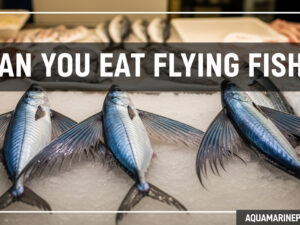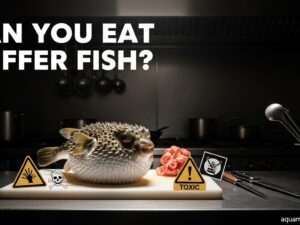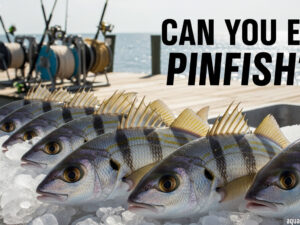Yes, you absolutely can eat pickerel! Chain pickerel are not only safe to consume but can be delicious when properly prepared. These freshwater pike family members offer sweet, mild, white meat that rivals popular table fare like haddock or walleye. The main challenge isn't safety or taste—it's the complex Y-bone structure that deters many anglers from keeping their catch.
Understanding which pickerel to keep, how to prepare them safely, and what cooking methods work best transforms this underutilized resource into excellent table fare. This comprehensive guide covers everything from mercury considerations to expert filleting techniques.
What Makes Pickerel Good to Eat?
Chain pickerel belong to the same Esocidae family as northern pike and muskellunge, all of which are edible when caught from clean waters. Despite being called "trash fish" by some anglers, can you eat chain pickerel is a question with a resounding yes from those who know proper preparation techniques.
The meat quality depends heavily on water conditions and fish size. Cold, clear lakes and rivers produce the best-tasting specimens, while warm, stagnant ponds often yield fish with muddy flavors.
Optimal Size for Eating
Most experts agree that 12-20 inch pickerel provide the best eating experience. This size range offers:
- Sufficient meat for a worthwhile meal
- Lower mercury accumulation than larger fish
- Easier bone removal during processing
- Firmer texture and milder flavor
Fish exceeding 22 inches may contain higher mercury levels and often develop stronger flavors that some find unpalatable.
What Does Pickerel Taste Like
What does pickerel taste like? When prepared correctly from good water, pickerel offers:
- Sweet, mild flavor without strong "fishiness"
- White, flaky meat similar to haddock or halibut
- Firm texture that holds up well to various cooking methods
- Clean finish that appeals to those who typically avoid freshwater fish
Water quality dramatically impacts taste. Fish from cold, well-oxygenated waters with rocky or sandy bottoms taste significantly better than those from warm, muddy environments.
Seasonal Taste Variations
Cold-water months typically produce superior-tasting fish:
- Fall and early winter fish often taste sweetest
- Spring pre-spawn specimens offer firm, flavorful meat
- Summer heat can soften flesh and intensify flavors
- Post-spawn fish may taste watery until condition improves
Are Chain Pickerels Safe to Eat
Are chain pickerels safe to eat? Yes, but with important considerations regarding mercury and water quality. Like all predatory fish, chain pickerel can accumulate mercury through their diet.
Mercury Content Guidelines
The FDA's fish consumption guidelines provide specific recommendations:
- Smaller fish (12-16 inches) generally contain lower mercury levels
- Limit consumption to 2-3 servings per week for adults
- Pregnant women and children should be more cautious with larger specimens
- Check local advisories for water-specific recommendations
States like North Carolina specifically mention jack fish (chain pickerel) in their high mercury advisory lists for certain regions, particularly waters south and east of Interstate 85.
Water Quality Considerations
Beyond mercury, consider these factors:
- Industrial pollution in some waterways affects fish safety
- PFAS contamination has been found in some freshwater fish populations
- Bacterial concerns require proper cooking to 145°F internal temperature
- Local advisories provide crucial safety information for specific waters
Chain Pickerel Diet and Habitat Impact on Taste
Understanding what do chain pickerel eat helps explain their meat quality and safety considerations. Young pickerel start with insects and crustaceans, but adults become primarily piscivorous.
Adult Chain Pickerel Diet
What does american pickerel eat varies by season and availability:
- Primary food source: Small fish (golden shiners, sunfish, minnows)
- Secondary prey: Crayfish, frogs, aquatic insects
- Opportunistic feeding: Small mammals, snakes, worms, mice
- Ambush predators: Strike from vegetation cover with explosive speed
This diverse diet contributes to their position as bioaccumulators in the food chain, making size selection important for minimizing contaminant exposure.
Seasonal Diet Changes
What do chain pickerel eat throughout the year affects their flavor:
- Spring spawning period: Reduced feeding, optimal meat quality
- Summer growth phase: Heavy feeding on baitfish and crayfish
- Fall preparation: Increased fat content for winter survival
- Winter maintenance: Slower metabolism, cleaner-tasting meat
Fish feeding heavily on crayfish often develop sweeter, more complex flavors compared to those eating primarily soft-bodied prey.
How to Fillet Pickerel Properly
How to fillet pickerel requires understanding the unique Y-bone structure that distinguishes pike family members from other freshwater fish. These bones run along the lateral line, creating a challenge that proper technique easily overcomes.
The 5-Fillet Method
This proven technique yields boneless meat from each side:
- Standard fillet cuts behind the gills and along the backbone
- Locate the Y-bones running along the lateral line area
- Make angled cuts at 45 degrees along Y-bone edges
- Remove three sections: back strip, tail section, and middle (discard)
- Check carefully for remaining bones before cooking
The result: Three boneless portions from each side instead of traditional single fillets.
Alternative Processing Methods
Processing options for bone-conscious cooks:
- Pickling method: Vinegar dissolves Y-bones over time
- Pressure cooking: Softens bones until they're unnoticeable
- Grinding technique: Food processor breaks bones into harmless fragments
- Cross-scoring: Multiple shallow cuts across Y-bone areas before frying
Each method has advantages depending on intended preparation and personal preferences.
Essential Filleting Tools
Success requires proper equipment:
- Sharp, flexible fillet knife (8-10 inch blade preferred)
- Cutting board with grip to secure fish during processing
- Filleting gloves for safety and better grip
- Good lighting to identify bone structures clearly
- Clean workspace for food safety compliance
Cooking Methods and Preparation Tips
Proper preparation transforms pickerel from "bony pest" to "delicious dinner." The key lies in understanding how different cooking methods affect both bones and flavor.
Best Cooking Techniques
Pan-frying remains the most popular method:
- Season fillets with salt, pepper, and preferred spices
- Dredge in flour or cornmeal for crispy coating
- Cook in butter or oil at medium-high heat
- Internal temperature should reach 145°F for safety
Grilling works excellent for larger fillets:
- Marinate 30 minutes in milk to reduce strong flavors
- Use aluminum foil to prevent sticking
- Cook skin-side down first to maintain moisture
- Flip once when fish flakes easily
Baking provides gentle, even cooking:
- Brush fillets with butter and seasonings
- Bake at 375°F for 15-20 minutes depending on thickness
- Add vegetables for complete meal preparation
- Cover with foil to prevent overcooking
Flavor Enhancement Techniques
Remove skin completely before cooking to eliminate slime-related off-flavors. The defensive slime coating that helps pickerel avoid predators can impart unpleasant tastes if not properly removed.
Milk soaking method:
- Soak cleaned fillets in milk for 30 minutes
- Helps draw out remaining blood and strong flavors
- Particularly effective for summer-caught fish
- Rinse briefly before seasoning and cooking
Salt water treatment:
- Brine overnight in salt water solution
- Traditional technique for muddy-tasting pike family fish
- Firms meat texture while reducing off-flavors
- Effective for fish from warm or stagnant waters
Comparing Pickerel to Other Freshwater Fish
When considering do chain pickerel taste good compared to popular freshwater species, they rank favorably among knowledgeable anglers who prepare them correctly.
Taste Comparison Chart
| Fish Species | Flavor Profile | Texture | Bone Difficulty |
|---|---|---|---|
| Chain Pickerel | Sweet, mild | Firm, flaky | Moderate (Y-bones) |
| Walleye | Very mild, sweet | Firm, flaky | Easy |
| Crappie | Mild, sweet | Soft, flaky | Easy |
| Largemouth Bass | Mild to moderate | Firm | Easy |
| Northern Pike | Mild to strong | Firm | Moderate (Y-bones) |
Similar to other freshwater fish species, pickerel benefit from proper handling and preparation. Their taste rivals bass species when caught from similar waters.
Regional Preferences
Cultural attitudes toward eating chain pickerel vary significantly:
- Southern United States: More accepting of freshwater fish consumption
- Northern regions: Stronger catch-and-release traditions
- Rural communities: Often view as valuable food source
- Urban areas: Generally unfamiliar with preparation techniques
Understanding these differences helps explain why some areas embrace pickerel as table fare while others dismiss them entirely.
Health Benefits and Nutritional Value
Like most freshwater fish, pickerel provide excellent nutritional value when consumed as part of a balanced diet. A 3-ounce serving contains approximately:
- 20 grams high-quality protein with all essential amino acids
- 3 grams healthy fats including beneficial omega-3 fatty acids
- 120 calories making it a lean protein choice
- Vitamins B12 and D supporting nervous system and bone health
- Minerals including selenium and phosphorus
The lean protein profile makes pickerel suitable for various dietary approaches, from weight management to muscle building programs.
Comparison to Store-Bought Fish
Wild-caught pickerel often contains:
- Lower contaminants than some commercially farmed fish
- Higher nutrient density from natural diet variation
- No antibiotics or artificial feeds common in aquaculture
- Seasonal fat variation providing natural dietary diversity
However, store-bought fish from reputable sources offers consistent quality and known safety standards.
Safety Considerations and Best Practices
Beyond mercury concerns, several safety factors require attention when consuming chain pickerel or any wild-caught freshwater fish.
Proper Handling Protocol
Field care determines final quality:
- Keep fish alive until ready to clean
- Ice immediately after dispatch if live well unavailable
- Clean within 2-4 hours of catching for optimal flavor
- Maintain cold chain until consumption
Processing safety:
- Use clean equipment and workspace
- Wash hands frequently during filleting
- Store cleaned fish at 38°F or below
- Cook within 24-48 hours of processing
Cooking Safety Standards
The EPA's fish consumption guidelines emphasize proper cooking temperatures:
- Internal temperature: 145°F minimum for safety
- Visual cues: Fish flakes easily and appears opaque
- Texture check: Meat separates cleanly along natural divisions
- No raw consumption: Freshwater fish should never be eaten raw
Parasites occasionally found in wild fish are eliminated through proper cooking techniques.
When to Avoid Eating Pickerel
Certain situations warrant caution or complete avoidance when considering pickerel consumption.
Water Quality Red Flags
Avoid keeping fish from:
- Industrial discharge areas with known contamination
- Urban runoff zones with high pollution loads
- Waters with fish kills indicating environmental problems
- Posted advisories specifically mentioning consumption restrictions
Fish Condition Indicators
Don't consume fish showing:
- Unusual lesions or growths indicating disease
- Strong ammonia odors suggesting bacterial contamination
- Soft, mushy texture indicating decomposition
- Off-colors or discoloration in meat after cleaning
Trust your senses—fresh, healthy fish have mild odors and firm texture.
Personal Health Considerations
Certain individuals should exercise extra caution:
- Pregnant women should follow stricter mercury guidelines
- Young children require smaller portions and lower-mercury fish
- Immunocompromised individuals may want to avoid wild-caught fish
- Those with fish allergies should consult healthcare providers
Making the Most of Your Pickerel Catch
Maximizing the value of harvested pickerel requires planning from hook to plate. Consider these strategies for optimal results.
Selective Harvest Approach
Rather than keeping every pickerel caught, practice selective harvest:
- Keep 2-4 fish in the 14-18 inch range per trip
- Release trophy specimens for breeding stock maintenance
- Avoid spawning areas during reproductive seasons
- Follow local regulations for size and bag limits
This approach provides table fare while supporting sustainable populations.
Processing Efficiency Tips
Batch processing saves time:
- Clean multiple fish at once using assembly-line approach
- Prepare consistent fillet sizes for even cooking
- Package in meal-sized portions for freezer storage
- Label with date and location caught for tracking
Utilize the whole fish:
- Save bones and head for fish stock
- Use smaller pieces for fish cakes or chowder
- Compost remains for garden fertilizer
- Share with friends to spread appreciation
Recipe Development
Experiment with different preparations to find favorites:
Classic Southern Style:
- Cornmeal coating with cajun seasoning
- Cast iron skillet with peanut oil
- Served with hush puppies and coleslaw
Asian-Inspired Preparation:
- Soy sauce and ginger marinade
- Steamed with vegetables in foil packets
- Served over rice with stir-fried vegetables
European Technique:
- Herb butter and white wine
- Baked with potatoes and onions
- Finished with fresh lemon juice
Expert Tips from Seasoned Anglers
Long-time pickerel enthusiasts share their accumulated wisdom for maximizing success from water to table.
Timing Recommendations
Best fishing times for table fare:
- Late fall through early spring for optimal meat quality
- Pre-spawn periods when fish are in prime condition
- Cold front aftermath often produces clean-tasting fish
- Early morning and evening hours for most active feeding
Seasonal considerations:
- Winter fish from ice-fishing often taste sweetest
- Spring fish benefit from cold water temperatures
- Summer fish require more careful preparation
- Fall fish building fat reserves can be excellent
Location Selection
Target productive waters:
- Clear lakes with rocky or sandy bottoms
- Spring-fed streams and ponds
- Areas with abundant prey fish populations
- Waters with minimal development pressure
Similar principles apply whether you're fishing different types of waters or exploring specific regional opportunities.
Preparation Secrets
Old-timer techniques that work:
- Score flesh diagonally before frying to break up Y-bones
- Use very hot oil for fast cooking that firms texture
- Don't overcook—pickerel becomes tough when overdone
- Season aggressively to complement mild flavor
Conclusion
Can you eat pickerel? Absolutely, and they can provide excellent table fare when you understand proper selection, handling, and preparation techniques. The key lies in choosing the right fish from good waters and using proven methods to address the Y-bone challenge.
Key takeaways for success:
- Target 12-20 inch fish from clean, cold waters
- Master proper filleting techniques or alternative processing methods
- Follow mercury guidelines and local consumption advisories
- Cook to proper temperatures using methods that complement the mild flavor
- Practice selective harvest to maintain fishing opportunities
Whether you're an experienced angler looking to expand your culinary horizons or a newcomer wondering about this underutilized resource, pickerel deserve consideration as legitimate table fare. With proper knowledge and technique, you'll discover why knowledgeable anglers consider them a hidden gem in the freshwater fishing world.
Ready to try pickerel for yourself? Start with fish from known clean waters, use the 5-fillet method for bone removal, and try a simple pan-fried preparation. You might be surprised how much you enjoy this overlooked freshwater delicacy.
Remember to check local fishing regulations and consumption advisories before keeping any fish, and always prioritize safety in both catching and preparation. Like other freshwater species, pickerel can provide sustainable, healthy protein when harvested responsibly.
For more fishing insights and techniques, explore our guides on different fishing methods and regional fishing opportunities to enhance your angling success.



